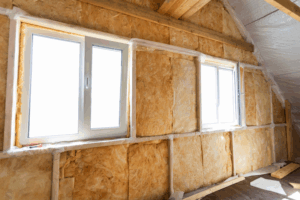
Routine septic tank inspections are a critical part of protecting your home, property, and plumbing system. Over time, buildup inside the tank can lead to clogs, backups, or even environmental hazards if left unchecked. If you are considering septic tank service in Dahlonega for the first time or as part of a regular maintenance plan, understanding what to expect can help you feel confident and prepared.
The Initial Appointment and Assessment
The inspection process begins with a scheduled visit from a certified technician. Prior to arrival, you may be asked to provide information about your home’s plumbing system, tank location, and any signs of trouble, such as slow drains or gurgling toilets. Upon arrival, the technician will locate the septic tank and access the lid for visual inspection.
During this assessment, the inspector will check the sludge and scum levels, which indicate how full the tank is and whether it needs pumping. They will also evaluate the condition of the inlet and outlet baffles, which help direct waste flow and protect the drain field from solid waste intrusion.
For homeowners who have never scheduled septic work before, choosing the right provider is essential. A reliable septic company in Dahlonega will offer transparent communication, thorough inspection protocols, and experienced guidance on the next steps if maintenance or repairs are needed.
Inspection Components and What They Reveal
A comprehensive septic inspection includes checking for cracks, leaks, or any structural damage within the tank. The technician will also verify that the tank is watertight, ensuring that groundwater is not entering and wastewater is not leaking into the environment. If available, inspection ports or cameras may be used to examine deeper areas of the system that are not easily visible.
In addition, the technician may inspect the drain field to confirm it is absorbing liquid properly. Any signs of pooling water or foul odors near the drain field could indicate a system failure or saturation that requires immediate attention.
These inspection details help homeowners make informed decisions and avoid unexpected failures. They also reinforce the importance of septic services in maintaining property value, environmental safety, and plumbing performance.
After the Inspection: Reports and Recommendations
Once the inspection is complete, the technician will provide a report outlining the current condition of your system. This may include measurements of sludge depth, visual findings, and any concerns that need to be addressed. If pumping is recommended, it can typically be scheduled as a follow-up service. In some cases, minor repairs or component replacements may be advised.
Scheduling regular inspections, typically every 3 to 5 years, depending on household size and system usage, is the best way to extend the life of your septic system. Preventive maintenance reduces the likelihood of costly emergency repairs and ensures your tank functions reliably year-round.
Conclusion
Scheduling a septic tank inspection is a proactive step that supports the health of your home and property. By working with a trusted provider for septic tank service, you gain peace of mind, protect your investment, and prevent avoidable plumbing issues. From the initial assessment to the final report, a professional inspection provides the insights and maintenance guidance every homeowner needs for long-term septic system performance.



